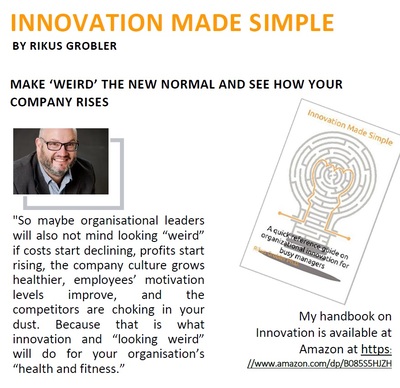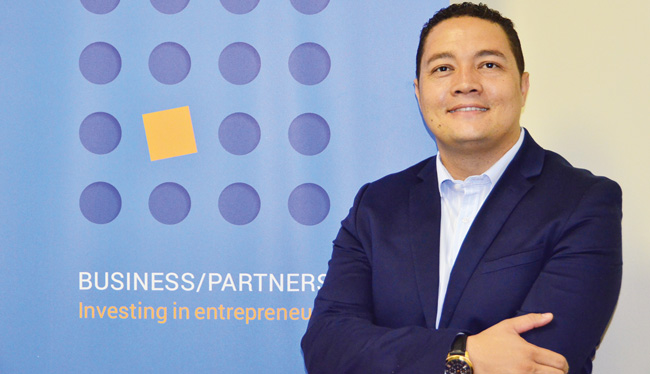
Borrowing ‘Lean Startup’ from Silicon Valley as a concept in Innovation

By Rikus Grobler, www.nis.co.na, [email protected].
Still on the topic of innovation methodologies, I have now dealt with Open Innovation, Crowdsourcing, and Lean Six Sigma as innovation methodologies.
Next, I want to discuss the Lean Startup methodology. The concept of Lean Startup was developed by Steve Blank and Eric Ries in the early 2000s in Silicon Valley and evolved into a methodology around 2010.
Lean Startup is an approach to building new businesses (startups) based on the belief that entrepreneurs must investigate, experiment, test, and iterate as they develop products.
So how does Lean Startup then qualify as an innovation methodology if it is related to entrepreneurship and starting a business? Let me explain.
Innovation through customers
According to the decades-old formula for starting a business, you write a business plan, pitch it to investors, assemble a team, introduce a product, and start selling as hard as you can. There are many statistics available on the failure rate of new businesses or startups, so I won’t go into the details, but the crux is that the failure rate for startup businesses is enormous.
Hence, as opposed to the “old” formula, the Lean Startup methodology focuses on developing products and businesses in a short period of time, which allows the creator of the product or business to quickly determine if their business model is viable.
When implementing the Lean Startup methodology, the business that uses this methodology will focus on developing a product while also gaining customer feedback, which usually involves releasing a minimum viable product to the market or a small subset of customers. In essence, the methodology favours experimentation over elaborate planning, customer feedback over intuition, and iterative design over traditional “big design up front” development.
Let me give a quick example. Zappos is an online retailer that sells a huge variety of bags and shoes. Zappos didn’t just become a million-dollar business overnight. They started by developing a minimal viable product of online shoe retailing. They just used a basic online shoe selling website at first.
As soon as they got the orders, they ordered those shoes from the original shoe brand and delivered them to the customers. This approach meant that they did not spend a lot of money on buying stock, and in doing so, they significantly minimized their risk. They continuously solicited feedback from their initial (small) customer base to understand what the customers liked and did not like, and changed their offering progressively. By the time when they realized that people really took an interest in this online retail business, that is when they bought the actual first stock.
In our ever-changing and hyper-competitive world, just as startups, corporates also have to develop new products, services, business models, or value propositions in uncertain environments, i.e., innovate or die. So, that is why I view the Lean Startup as an innovation methodology that startups, entrepreneurs, large corporations, and basically anybody that wants to innovate, can apply.
The underlying principles of the methodology that applies to “innovators” (corporates) boil down to a couple of fundamental truths. Success in innovation is about learning how to solve customer problems. Instead of focusing on just adding new technologies or features to an existing offering, rather focus on solving customer problems first. Corporates usually begin with an idea for a product that they think people want. They then spend months, sometimes years, perfecting that product without ever showing the product, even in a very rudimentary form, to the prospective customer.
When they fail to reach broad uptake from customers, it is often because they never spoke to prospective customers and determined whether or not the product solved a customer’s problem. Avoid building products and offerings that no one wants. Using the Lean Startup methodology means you test before you implement and get customer feedback to avoid developing innovations that miss the mark.
Next Time
In the next delivery, I will conclude the theme of innovation methodologies with a discussion of Design Thinking, which, in my view, has become the most popular and the most widely used innovation methodology.
I conclude with a short but very potent quote from Zach Hendrix: “Listen to your customers, or you will have none.”
Click on the thumbnail below to order Dr Grobler’s e-book on Innovation from Amazon.













































